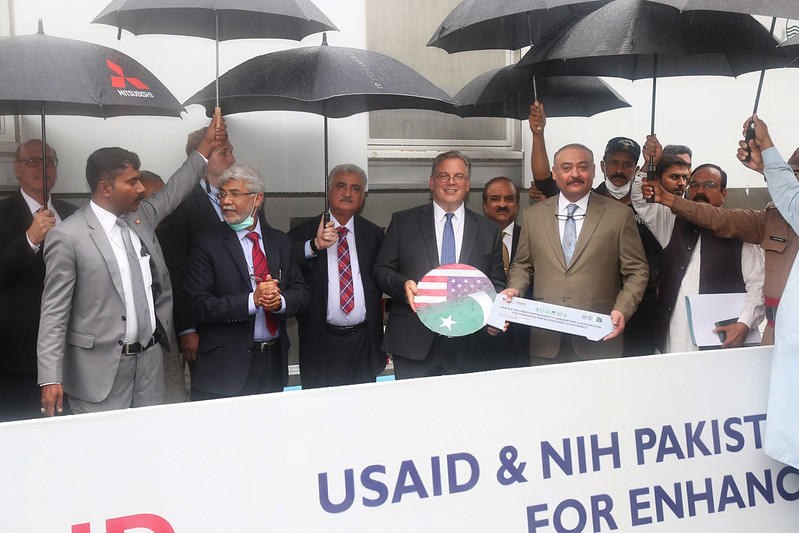By: Prof Abdul Shakoor Shah
World Youth Skills Day is celebrated on 15 of July every year. Skill is the unified force of experience, intellect and passion in their operation J. Ruskin. The youth populace will boost by more than 78 million between 2021 and 2030. Low income countries will account for almost half of that increase. Education and training systems need to counter this challenge. The fraction of young people not in employment, education or training (the youth NEET rate) has remained tenaciously high over the past 15 years and now stands at 30% for young women and 13% for young men globally. Recent estimates suggest that 600 million jobs would have to be created over the next 15 years to meet youth employment needs. Around 259 million young people in 2016 were classified as NEET and this number ascended to a guesstimated 267 million in 2019 and it will jump to more than 273 million in 2022. Globally one in five people is NEET that is not in employment, education, and training. Three out of four young NEETs are women. Between 1997 and 2017, the young population grew by 139 million and the population of the youth labour force shriveled by 58.7 million. Nearly 2 out of 5 young workers in emerging and developing economies live on less than US$3.10 a day. Globally, the youth unemployment rate is almost three times higher than the adult rate. Youth represent 25% of the total working age population but make up more than 40% of the unemployed. Globally more than one third of all youth aged suffer from a deficit of decent work opportunities. More than 74 million young people were looking for work in 2015. Youth, particularly young women, continue to be inexplicably affected by limited employment opportunities and unemployment.
Enterprises and organizations brought skills development approximately to a languishing period due to lockdown initiatives pioneering during the pandemic. Training was episodic for 86% of tyro and 83% of interns/trainees. Almost half of the enterprises stopped paying stipend or wages to tyro, interns and trainees. The International Monetary Fund (IMF) guesstimates that the world economy will taper by 3.3% in 2020 with a warning expected recovery in near future with a 6.0 growth rate remains highly uncertain. The ILO finds that 8.8% of work hours were lost in 2020, comparable to 255 million full-time jobs. The World Bank emphasized that the constant trend toward poverty reduction observed for more than two decades was upturned instead of declining by 31 million in 2020, as expected before the pandemic, the number of people living in extreme poverty increased by 93 million. UNESCO guesstimates that almost 70% of the world’s learners are affected by school closures across education levels. The TVET institutions survey is jointly done by UNESCO, the International Labour Organisation (ILO) and the World Bank reported that distance learning is now the most common way of imparting skills with extensive difficulties regarding among others like curricula adaptation, trainee, and trainer preparedness, connectivity, or assessment and certification processes. Before the current crisis, young people were 3 times as likely as adults (25 years and older) to be unemployed. Due to the COVID-19 pandemic, currently, more than 1 in 6 young people are out of work.
The youth are deemed the future of any society and a country. Over 64% of our population is below the age of 30 years, one of the largest young populations in the world. This can be turned into the greatest dividend for Pakistan if we are able to capitalize on it. Regrettably, unavailability of job opportunities, lack of social engagement, lopsided education and health facilities, coupled with social injustices, outdated traditions, and an exclusionary social attitude towards the youth are warning of a ticking bomb. The present educational system has turned youths’ dreams and aspirations of securing dignified livelihoods into a nightmare. Schooling and degree are not enough to guarantee employment but skills do. Skill development can help us in putting an end to widespread unemployment. The UNDP Report 2020 shows that 29% of Pakistani youths are uneducated while only 6% have more than 12 years of education. The report further discloses that 4 million youngsters step into the working age population and only 39% get employed annually. Most drastically almost half of the country’s youth are not in education, employment or training. Informal sector training does not equip our youths for national and international markets and they are bound to be stuck in the informal sector. According to ILO, the unemployment rate for 2020-21 will remain at 9.56%. To improve labor force participation rates, an additional 1.3 million jobs must be generated annually for the next five years.
Pakistan’s Human Development Index for 2020 was 0.557, scaling the country in the medium human development category, positioning it at 154 out of 189 countries. In the regional educational index only Afghanistan lags behind Pakistan. The government initiatives for the youth are insufficient to engage 2 million young workforces entering the market annually. We can only turn this bulge by imparting and transferring skills to the youths. The United Nations Population Fund (UNPF) estimates that Pakistan’s population is currently growing at an unsustainable rate (2.4% annual average). It is anticipated that over the next four decades around 2.1 million young people will enter the labor force in Pakistan, reaching a guesstimated 181 million by 2050. The government must work on the capacity building of health institutions, education institutions and also create job opportunities to support the exploding populace. Keeping in mind the technological development of the era, the government should heed on possible youth entrepreneurship initiatives in the field of technology, education, health and online businesses. It is estimated that as many as 52% of the workforce in the US, 68% in the UK, 75% in Germany, 80% in Japan, and 96% in South Korea have undergone formal skill training. In comparison, less than 5% of people have undergone similar training in Pakistan. We require approximately 3 million trainees if we prevent youth from entering into other possibilities of tertiary education. While on the other hand we have, only an estimated 400,000 available seats in 3,740 institutes with 18,000 teachers in the formal TVET sector. For equipping 3 million youth with skills on traditional training based methods, it would require at least 45,000 more institutes and an additional 200,000 TVET teachers to be inducted into the system.
The writer is Prof. in English and Freelance Columnist: [email protected]








